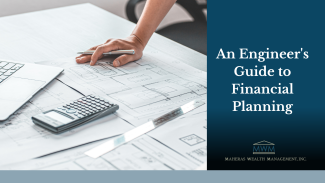
An Engineer's Guide to Financial Planning
As an engineer, you already likely know the importance of accurate input when it comes to the final equation, which may put you ahead of the game when it comes to managing your finances. Below are a few ways engineers could apply their skills to their financial planning process.
Automate and Optimize Your Finances
In today's digital society, it's easy to put bills on autopay and make payments online most of the time. And for regular, steady bills like cable and internet, your mortgage or rent, your cell phone, and any student loans or auto payments, setting up recurring payments may relieve you of the need to remember to pay dozens of different bills each month. As long as you have an adequate financial cushion to cover these bills when they come due, automating your finances may save you time, effort, and the potential for late fees and collection notices.
Stay Flexible
It may be easy for many people, engineers in particular, to treat their finances with a certain amount of rigidity—especially if you have a steady wage and relatively stable expenses. However, the ability to pivot or adjust your finances to account for changes in income, unexpected expenses, and other surprises may be invaluable. Try to keep an open mind and remain flexible when challenges or opportunities come your way.
Invest for Your Future
Engineers may make anywhere from $50,000 to $80,000 or more per year, well above the median individual income in the U.S.1 Use this salary to your advantage by setting aside some funds for your future, including your retirement.
If your job provides a 401(k), this may be a useful place to stash up to $20,500 per year (or $27,000 per year if you're age 50 or older).2 Your 401(k) contributions won't count toward your taxable income, saving you money in taxes while allowing you to save for future expenses. Some employees also contribute up to $6,000 per year to an individual retirement account (IRA) or Roth IRA as long as your earned income meets certain limits. Setting aside these funds now may not only provide you with a nice nest egg upon retirement, but it may also get you in the habit of saving and help you avoid lifestyle creep when your income increases.
Important Disclosures:
This material was created for educational and informational purposes only and is not intended as ERISA, tax, legal or investment advice. If you are seeking investment advice specific to your needs, such advice services must be obtained on your own separate from this educational material.
Contributions to a traditional IRA may be tax deductible in the contribution year, with current income tax due at withdrawal. Withdrawals prior to age 59 ½ may result in a 10% IRS penalty tax in addition to current income tax.
The Roth IRA offers tax deferral on any earnings in the account. Withdrawals from the account may be tax free, as long as they are considered qualified. Limitations and restrictions may apply. Withdrawals prior to age 59 ½ or prior to the account being opened for 5 years, whichever is later, may result in a 10% IRS penalty tax. Future tax laws can change at any time and may impact the benefits of Roth IRAs. Their tax treatment may change.
All information is believed to be from reliable sources; however LPL Financial makes no representation as to its completeness or accuracy.
This article was prepared by WriterAccess.
LPL Tracking: 1-05217801
1 https://www.ziprecruiter.com/Salaries/What-Is-the-Average-Engineer-Salary-by-State
2 irs.gov/newsroom/irs-announces-changes-to-retirement-plans-for-2022

